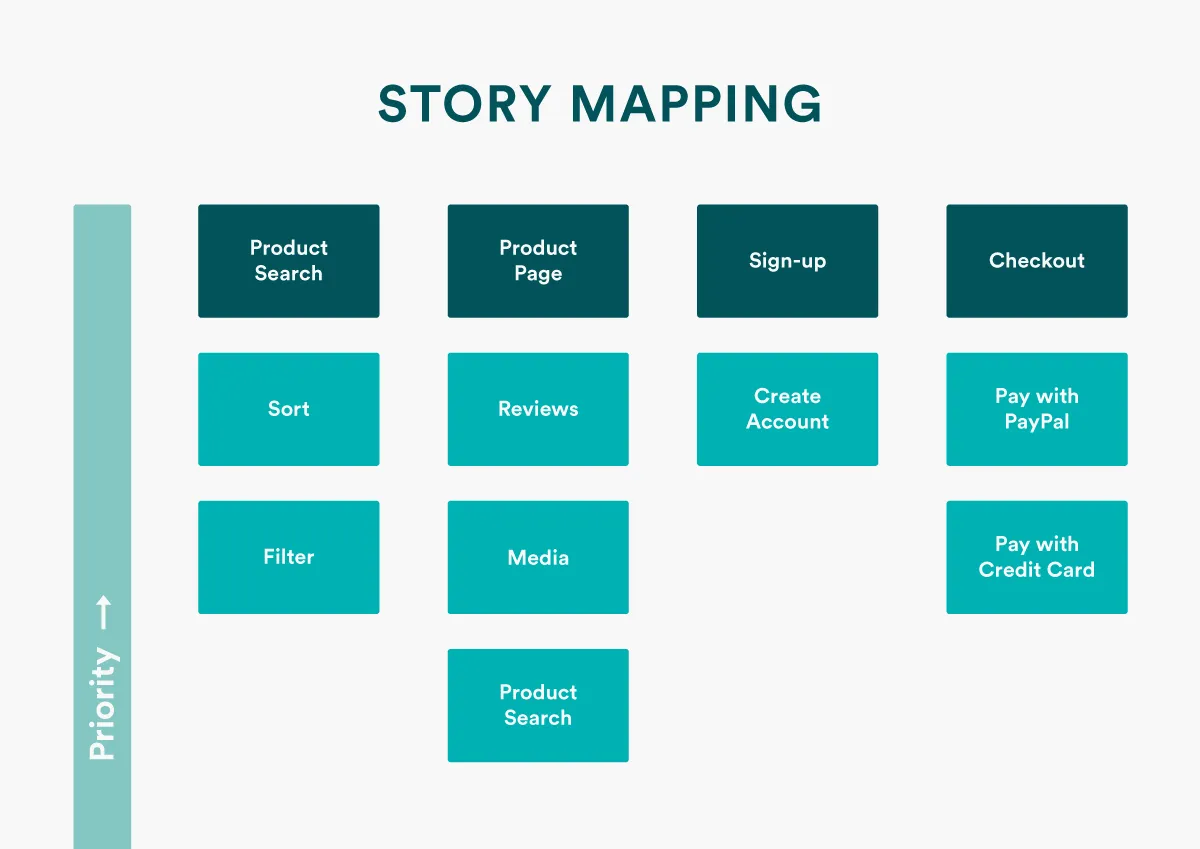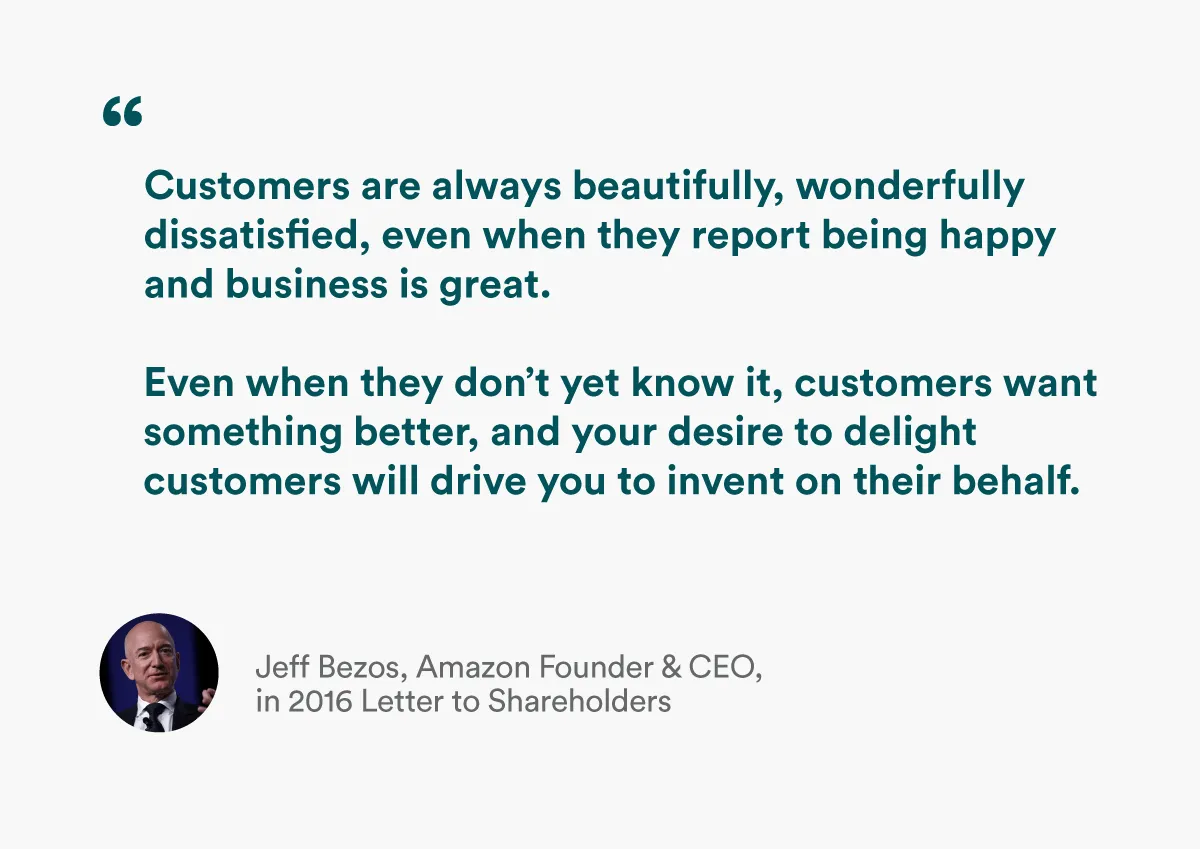Tactics to Streamline Alignment between Product and CS

Product managers and customer success managers have more in common than they think.
They both focus on strategy, customer roadmaps, product features and product adoption, collaborating with other teams, and above all – putting the customer at the center of their focus.
But the product management team has one very important task which no other team in SaaS is held accountable for.
They are responsible for the success of the product.
Just as you, in customer success, are held responsible for the success of your own accounts, the product team is driven by the success of the customer through the use of the actual product. If you think about it, they could be renamed “the product success managers.”
But if both customer-focused teams have the same end goal in mind (to foster a customer-centric mentality throughout the organization), why does communication get lost from time to time, especially when it comes to specific requests that come directly from the customers? How does product prioritize customer requests, and what can you do in customer success to help product with the process?
Let’s take a look at how to improve the communication between CS and Product so that your feature requests go from “this would be nice to have,” to “wow, this is amazing!”
Table of Contents
Feature Requests: The Journey from Feedback to Going Live
What you do with customer feedback is a tricky business. On the one hand, you need to have it and you also need to acknowledge it. On the other hand, you need to deal with your company and product strategy which may or may not exactly align with the customers’ hopes and wishes.
At the same time, you are living in a subscription based economy, meaning, recurring revenue (which derives from a long-term relationship with your customers) is how your company stays afloat in the competitive market.
You may be thinking, but our customers are loyal, they are happy and they love our product and they have already talked about renewing our contract with them. Unfortunately, this doesn’t guarantee anything.
Studies show that just because your customer may love your product now, this doesn’t mean that the love will be able to withstand the current climate they are experiencing with your product and brand as a whole.
According to PWC on a report on customer experience,
“59% of Americans would walk away from a product they loved after many bad experiences, 17% after just one bad experience.
It’s a lot of pressure for the product team to create a product that is not just what the customers want, but also what they need, when they need it at different stages.
So where do you draw the line? How can you leverage customer feedback and customer feature requests?
Product Team Responsibility
Officially, a product manager needs to know how to prioritize feature requests and additional feedback. They will take these requests and rank them against the strategic goals and objectives.
This requires them to make the difficult trade-off decision of what value each request will bring to the customer and to the business.
Also an important thing to consider is that each request consists of specific requirements and effort. This means that it’s not just about the product team’s schedule, it depends on the engineering workload as well.
Not only this, but there is also a desired For more information visit our blog which the product team strives to uphold within the product.
Let’s face it. Everyone has their opinion, and with the digital economy, most consumers expect to get what they want, when they want it. So should product teams give every single tiny request the same kind of attention and consideration?
In short, the answer is no.
It’s just not feasible to consider every single ask the same. This is why it is up to the product team to understand where this request fits into the product, and where the request fits into the overall product and business strategy.
But for customer success, the focus is a bit different.
Customer Success Team Responsibility
First and foremost, the ideal outcome of a customer success manager is implied in the job title.
Successful customers make successful businesses, and the reason for this is that customer success is directly tied to customer growth. For some, this is a pretty obvious statement but overall, it is still a fairly new concept to most businesses today.
As the customer’s internal champion, it is also your duty to voice their concerns about your product.
Because you have direct access to the client, you are tasked with figuring out what specific product functionalities can support your account on the path to success.
For you, customer feedback, no matter how big or small, should always be considered a priority.
Since your role is built on the customer relationship itself, there is a lot of work involved to maintain a good relationship.
As with any healthy relationship, there needs to be a clear and constant dialogue around what both parties want to achieve right from the very beginning. A strategic customer success plan is the best place to start when first onboarding your customers.
With the plan in place, you discover:
- Customer goals
- Customer expectations
- What KPIs to measure success
I want to stress again the importance of having a plan in place because without this, customer feedback or customer requests may otherwise seem to be coming out of nowhere and will go unnoticed, eventually damaging your business.
For example, when it comes to your product, you should already be aware of how they are using your solution and what they want to achieve with it.
Regular check-ins and metric reviews provide you with the current status of product adoption and product usage.
In fact, since you have already established a grounded relationship with your customers, you should not even be a bit surprised when feature requests come in.
And what are feature requests? They are asks. They are wants. They are needs. Even if it’s to change a button color from light green to dark green; it’s up to you to decide what happens with them, it’s up to you to understand where they are coming from.
But it’s also part of your job to challenge requests from time to time. “Why” is a very powerful word. A simple investigation might lead customers to understand that they can actually accomplish the same goal in a slightly different (and often more efficient) way. Basically, you can sometimes guide customers to the processes and get to the conclusion that they’re perfectly fine with the current status quo.
With a cross-functioning role such as a customer success manager, being the customer advocate is one of the most important pieces of the customer success puzzle.
When it comes to customer feedback and feature requests, your goals consist of:
Maintaining the customer relationship
- Check ins
- Feedback
- Product updates / Product request updates
- Showing value/ROI
Revenue retention
- Renewals
- Expansion opps
- Customer loyalty and advocacy
And you know that whatever information is passed to you directly, it is in your hands to decide what to do with it. Proper feedback, updates, or general transparency about customer requests are the main drivers behind customer loyalty and trust, which is necessary for you to cement your relationship with your customers.
But as far as the product management team is concerned, they simply do not have the capacity to fulfill every wish the customer may have.
Nonetheless, there needs to be a way to close the feedback loop regardless of the request.
So what can you do as a customer success manager to better improve your feature request process between your customer and your product team?
Partnering with Product Management on Feature Requests
Here are 3 tips on how to streamline the collaboration with your talented product team.
1. Don’t offer solutions, offer the problem
Sounds kind of counter intuitive, right?
But the thing to remember here is that the product team is comprised of highly professional problem solvers.
Because you work directly with the customers, you have first-hand insight into the customer issue. While they can write their problems in their own words and share it with you, it doesn’t always mean they fully understand their own issues they are having.
Common customer pain points are related to:
- Productivity
- Price
- Processes
- Support
- Maintenance
But what is important for you is to identify the core of the pain.
You might hear something like – “this product is way more complicated than you explained when we first started”, or “I don’t have enough time to read through all of your training material” could sound like a problem with how your product is set up, but could actually indicate that there are other issues occuring now.
‘It is too complicated now’ when it wasn’t complicated before, is an emotional response indicating that they are frustrated and had different expectations.
‘I don’t have enough time’ is expresses stress and time management. Here you see that there is a limited amount of time which the customer does not have.
The reason for the frustration lies with the customer. It is up to you to find out the reason. Perhaps it is something that actually has to do with your product, or perhaps the customer lacks budget and resources, which is something you have no influence over.
By identifying the core of the pain, the product team will better identify how much this is affecting product usage and how this, in turn, influences the product strategy.
It’s important to share the problem, yes, but also to understand the problem first.
Remember, the product team consists of problem solvers, not problem interpreters.
2. Don’t be ashamed to share the quick fix
Workarounds have existed since the dawn of time. We make due with what we have when we don’t have it. It’s human nature, really.
In terms of software, workarounds are the reason why some products function in the first place for some specific edge cases. It could also be that the workaround is the only way the customer is able to use the product the way they want to.
Often misunderstood, workarounds have a huge impact on not only how we work with software, but also how we feel about the software product we are using.
According to research by Aptean, 51% of survey participants claimed that software workarounds affect workplace productivity through the following examples:
“Workarounds add 10+ hours to my week”
“Workarounds are just wasted time”
“Workarounds affect my ability to focus on real problems”
For customer success, these negative experiences are red flags indicating how the customer perceives the overall customer experience.
For product people, this quick fix is a clue to understanding the problem and finding the solution.
For them, the workaround could be the key to unlocking the true frustrations behind a feature request.
If you were able to provide your customer with a temporary solution to the problem, or if they were able to create a creative quick fix in the meantime, this information should also be shared with the product team as well.

3. Rely on data to set the priorities
“Product managers provide focus through prioritization” – Satya Patel, former PM at Twitter
You may think that PMs are great at prioritizing, but as Satya Patel puts it, they are great at providing focus.
Product teams are constantly bombarded with information, data, requests, and feedback. It’s up to them to know what to consider, what to filter out, and what to reject.
This requires more than just prioritization skills, they need to develop and stick to a functioning framework.
There are many product prioritization frameworks you can test out but it is up to your product team to find out what framework best fits your product strategy and company vision.
Some common frameworks used are:
- Kano model
- Story mapping
- Opportunity scoring
In a recent presentation by Jeff Betts, instructor at San Francisco based Product School, says one useful way to break down product prioritization is through the use of portfolio thinking, or “to have quantifiable ways to identify the probability of impact and the costs to implement them.”
This framework works particularly well when you are allocating scarce resources – time, budget, management, etc. – while at the same time trying to explore new untapped areas in the market.
Overall, all prioritization frameworks reveal:
- What is the impact
- What is the cost
- What is the pain
- What is the feedback
- What is the result
With this information, PMs can narrow down the information into a list of specific demands which they can justify (without the impact of outside influence) into their product roadmap.
But the biggest and most overlooked resource for product teams to better understand and prioritize feature requests is through their collaboration with customer success.
While the product team maintains enough customer information from their own such as UX research, studies, outreach, reviews, and testing, customer success adds an extra piece of the story by closing the gap between customer and product through information from:
- Customer success solution
- NPS surveys
- Customer health scores
- Live chat review
- Onsite meeting review
- Customer review websites
This wealth of information is invaluable when finding the connection between customer pain and customer need.

PM and CS: Maintaining the Customer Focus
Product managers know the “why” behind a feature. Customer success knows the “why” behind the request.
When you can properly align the two perspectives, the end result is not only having a more valuable product, but also a better user experience by:
- telling a better product story
- removing customer pain
- showing value at the right time
- closing the feedback loop between customers/CS/Product
As Jeff Bezos says in his quote above, the customer will always want something more, even when they claim they are happy.
It is up to your product and CS teams to align and define what it means to have a customer focus in order to provide the best product on the market that matches both customer expectations and company strategy.
What may start as a small feature request can turn into just one of the reasons supporting your customer retention strategy.
The collaboration between customer success and product management is critical for your business. If you want to know more on how to align the two, watch the recording of our webinar with Mark Pecoraro on how and when you should automate specific parts of customer success to improve the customer experience.

